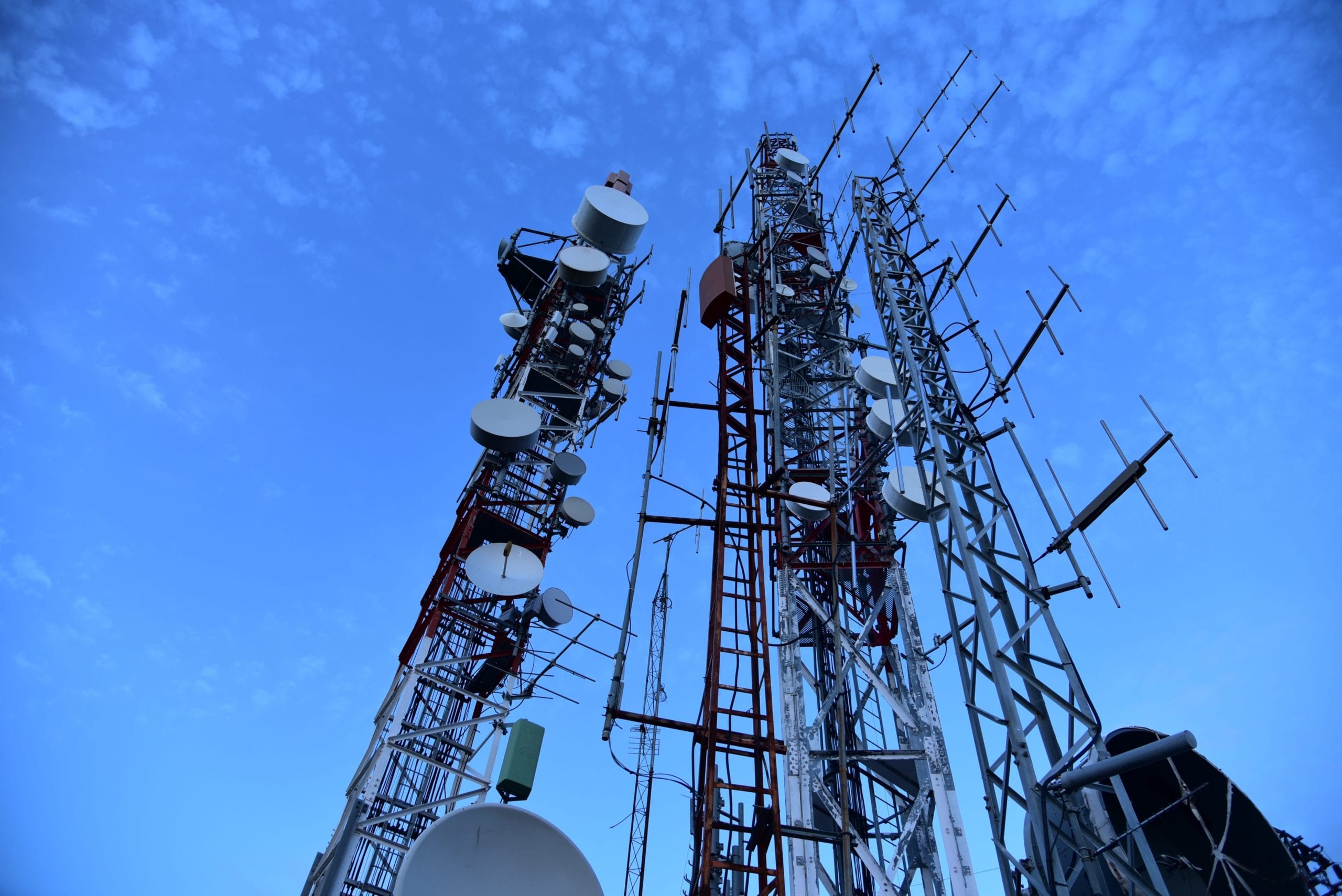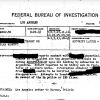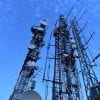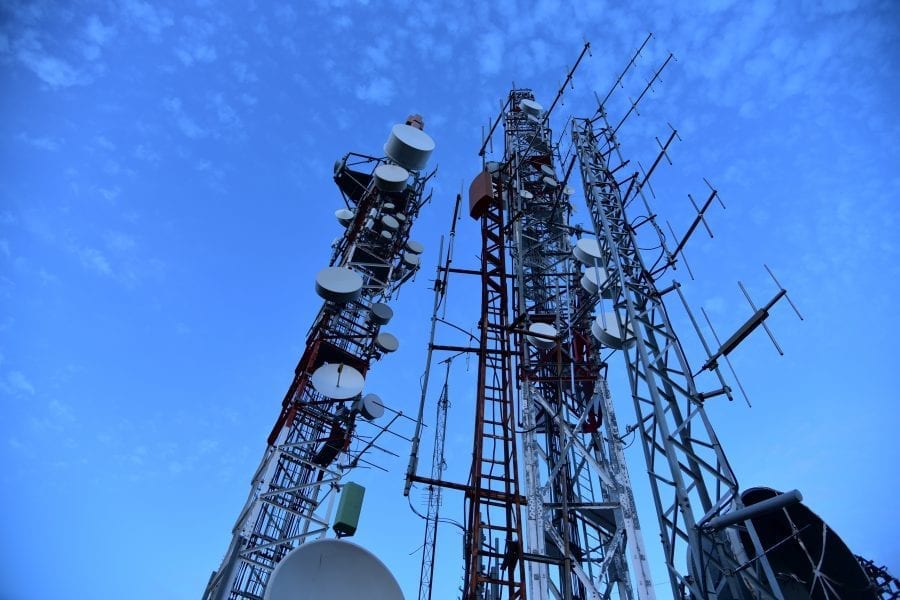PART 3: So, back to research and investigation into the deployment of these cellular antenna systems by crown castle. Apart from finding a litany of legal documentation where Crown Castle had sued townships, I began to look into other aspects of these cell tower rollouts (specifically pertaining to the impact on neighborhoods, on health, on perceptions, was this tech needed or just “upselling” to a market, etc).
I also wanted to see what kind of research had gone into these antenna systems from a safety/health perspective. As these rollouts were brand new, I expected “well, they surely have done longitudinal studies on the effects of them on the environment, or cellular health, etc”.
Remember, the FCC back in Oct 21, 2014, in FCC-14-153A1 [In the Matter of Acceleration of Broadband Deployment by Improving Wireless Facilities Siting Policies Acceleration of Broadband Deployment: Expanding the Reach and Reducing the Cost of Broadband Deployment by Improving Policies Regarding Public Rights of Way and Wireless Facilities Siting]
- the process of deploying these (cellular) facilities can be expensive, cumbersome, and time-consuming. In addition to any private arrangements necessary to gain access to suitable land or structures, parties must typically obtain siting approval from the local municipality. They must also comply with the Commission’s rules for environmental review, which implement our obligations under Federal statutes including the National Environmental Policy Act of 1969 (NEPA) and Section 106 of the National Historic Preservation Act of 1966 (NHPA or Section 106).
- Although these review requirements serve important local and national interests, local and Federal review processes can slow deployment substantially, even in cases that do not present significant concerns. Because these processes can significantly delay deployment, we now take action in four areas to reduce regulatory obstacles and bring efficiency to wireless facility siting and construction, as summarized below.
So – the FCC basically moved to bypass due process at the local, state, and federal level to push through these rollouts because to them, it delayed the ability to rollout 5g networks faster.
So we are putting “rapidity” of deployment above:
- Environmental due process
- Health due process
- Municipality Codes and Due Process there
- States Codes and Due Process there
One would assume, as I stated above, that a variety of standards surely would have been explored, safety measures, and the like.
What I came to find out is this: During the proceedings, many residents were concerned with and asked about the effects of these cellular antennas on:
Health, wildlife, etc.
Crown Castle would reply in every case that “the RF emission from these devices is well below the maximum threshold the FCC has put out a guideline as safe.” Put another way, Crown Castle is not claiming they are safe. Instead, they are saying that the FCC has defined a guideline and that emissions below that standard were deemed to be safe. Thus, since Crown Castle’s antennas emit RF below that threshold, the FCC would deem them as permissible.
Now, let’s remember. The FCC is not a health agency, nor are they scientists studying the effects of transmissions on ALL the various aspects of life. That being said, we would hope they were current on research, standards, information, and the like…SURELY in these cases where they are literally moving to fast-track through the standards and protocols that for them are “cumbersome and delay the rollout of this new technology.”
Ready for this?
Those guidelines for “safety”… were last updated in the year: 1996.
In 1996, the FCC adopted new guidelines and procedures for evaluating environmental effects of RF emissions.
So that means, these so-called “safety” guidelines are OVER 20 years old. And they are GUIDELINES! They are not scientific studies or in depth-long-term cohort studies. They are guidelines. 20+ years old.
Do you know what wasn’t even around in 1996
- Cell phone use was just starting to become more common. The sight of a cell phone in movies was a “wow” factor. Iphones didn’t come till 11 years later (2007)
- The human genome hadn’t even been mapped yet. That didn’t occur till 2004. Which means, folks didn’t even understand what was going on at a cellular/molecular level till after 2004.
- Youtube (2005)
- Indoor & Public Smoking Bans (yes…can you believe this?)
- the Institute of Medicine said those public smoking bans have cut exposure to secondhand smoke, which, in turn, has contributed to a reduction in heart attacks and death from heart disease.
So, these “safety” guidelines were before scientists could even map and begin to study the CELLULAR effects of RF emission.
Ok, well, let’s look at what those standards were looking at.
They really tend to focus on the absorption of RF into the body based on models that the body is like a water molecule. Think of a microwave oven. You put something in. energy is absorbed, which then heats up that object. So, in the case of cellular transmission, it’s looked at the same way.
A body can absorb energy. If the body doesn’t heat up, then it’s deemed “safe”.
But as we can begin to see, these 1996 “current” safety guidelines are based on the obsolete hypothesis that heating is the only harmful effect of EMFs. Again, 1996. They had NO WAY to study the non-thermal effects on wildlife, humans, or even CELLS (the genome wasn’t mapped for another 8 years folks). Put simply, these safety guidelines are insanely obsolete.
Currently, there are no national or international “standards” for safe levels of the radiation emitted by wireless or microwave devices. Instead, the US government adopted “guidelines” developed by industry based on decades-old research. Guidelines have a much lower certainty than a “standard” as proper long term safety testing was not done to ensure the public was protected from all possible harm. In fact, no “safe” level has been scientifically determined for children or pregnant women. Therefore, the claim that a device “meets government standards” or that radiation levels are “FCC compliant” gives a false impression of safety.
Yet, this is what is “permissible” and thus in township meetings, this is the answer given, and of course, since it’s a process hearing, that then is acceptable, and things move forward. Hundreds of scientists have proven that many different kinds of acute and chronic illnesses and injuries are caused without heating (“non-thermal effect”) from radiation levels far below international guidelines.
Biological effects occur even at near-zero power levels. Effects that have been found at 0.02 picowatts (trillionths of a watt) per square centimetre or less include altered genetic structure in E. coli and in rats, altered EEG in humans, growth stimulation in bean plants, and stimulation of ovulation in chickens.
So lets look at the fallacies in these guidelines.
Fallacy 1: The only adverse biological effect from exposure to electromagnetic radiation (EMR) is heating.
Fact: Heating is not the issue. Hundreds if not thousands of studies show adverse health effects from headaches and sperm damage to many types of cancer including brain cancer. In all of the studies with no temperature change. These were the kinds of studies that led the World Health Organization (WHO) to declare radio frequency radiation a Group 2B (possible) Human Carcinogen.
Fallacy 2: Only immediate (acute) adverse biological effects are important to consider; long-term (chronic) effects are not a concern.
Fact: The FCC’s exposure limits did not consider the health effects to people if they are exposed to hours and hours of this radiation over several years. Cancers can have long latency periods, and several significant research studies show links between long-term exposure and brain tumors. Such research led to the IARC Group 2B (possible) Human Carcinogen classification, and this information on long term effects was not considered when FCC’s exposure limits were developed decades ago.
Fallacy 3: Measuring radiation power levels by averaging over time allows us to understand the impact to our health. Peak radiation exposures are not necessary to measure to understand the potential impact from an exposure.
Fact: Peak millisecond radiation bursts impact our bodies at the cellular level. FCC’s exposure limits average the radiation exposures for 30 minutes, rather than consider the intense pulses that people are exposed to. Many scientists are concerned that it is the erratic nature of the wireless signal that can cause the harmful biological effects. If you report averages then those are numbers determined by calculation instead of reporting the actual peak levels. How much lower are the averages than the peaks? Averages can report numbers that appear to be far lower than peak levels.
Background: In the U.S., the FCC regulations (mostly for IEEE C95.1-1991) averaged exposure to the public over a 30 minute time period, and for workers a 6 minute time period. ICNIRP defines the averaged exposure to the public and to workers over a 6 minute time period.
To illustrate: I punch you, and that breaks your nose. I say the power of my punch can be averaged over the last year (that’s 365 days) and therefore you should not be hurt as I really did not punch you hard over the entire year—considering only the average power. Does this make sense? Should we use average or peak when we talk about measuring the impact on our bodies?
Fallacy 4: Assessments of the the unique vulnerability of children and the fetus is not necessary—only the radiation absorption into a large man is important.
Fact: FCC compliance testing utilizes a model of a 220 pound male head. Research repeatedly indicates that the radiation penetrates deeper into children’s smaller bodies and brains. The current FCC exposure limits did not consider the higher energy absorption in fetuses, children and women.
Fallacy 5: All body tissue uniformly absorbs radio frequency radiation. The ability of radiofrequency radiation to be absorbed differently into different body tissues and to have different biological effects due to the unique makeup of different body tissues and organs is not important to consider in understanding risks to public health.
Fact: The FCC’s exposure limits do not consider how this radiation is differentially absorbed by various body tissues. For example, female breast tissue is highly absorbent tissue, therefore the radiation will result in a much higher dose. Eyes and testes are also particularly vulnerable to electromagnetic radiation. Children’s bodies have been shown to have a higher water content making their tissues more absorptive of the radiation. However scientific documentation of the different electrical properties of different tissues in humans of various ages does not exist in the decades old FCC exposure limit guidelines.
RF radiation has both immediate and long-term effects. Cancer and heart disease are examples of long-term effects. Alteration of heart rhythm and changes in brain function (EEG) are examples of immediate effects. A syndrome that was called radiowave sickness in the former Soviet Union and is called electromagnetic hypersensitivity (EHS) around the world today can be either acute or chronic. Professor Dr. Karl Hecht has published a detailed history of these syndromes, compiled from a review of more than 1,500 Russian scientific papers and the clinical histories of more than 1,000 of his own patients in Germany. Objective findings include sleep disorders, abnormal blood pressure and heart rate, digestive disorders, hair loss, tinnitus and skin rash. Subjective symptoms include dizziness, nausea, headache, memory loss, inability to concentrate, fatigue, flu-like symptoms and cardiac pain. The EUROPAEM EMF Guideline 2016 states that EHS develops when people are “continuously exposed in their daily life” to increasing levels of EMFs, and that “reduction and prevention of EMF exposure” is necessary to restore these patients to health. EHS should no longer be considered a disease, but an injury by a toxic environment that affects an increasingly large portion of the population, estimated already at 100 million people worldwide, and that may soon affect everyone if the worldwide rollout of 5G is permitted. The International Scientific Declaration on EHS and multiple chemical sensitivity (MCS), Brussels, declared in 2015 that “[i]naction is a cost to society and is not an option any more… [W]e unanimously acknowledge this serious hazard to public health… [urgently requiring] that major primary prevention measures are adopted and prioritized, to face this worldwide pan-epidemic in perspective”.
In summary:
In 2015, 215 scientists from 41 countries communicated their alarm to the United Nations (UN) and World Health Organization (WHO). They stated that “numerous recent scientific publications have shown that EMF [electromagnetic fields] affects living organisms at levels well below most international and national guidelines”. More than 10,000 peer-reviewed scientific studies demonstrate harm to human health from RF radiation. Effects include:
- Alteration of heart rhythm
- Altered gene expression
- Altered metabolism
- Altered stem cell development
- Cancers
- Cardiovascular disease
- Cognitive impairment
- DNA damage
- Impacts on general well-being
- Increased free radicals
- Learning and memory deficits
- Impaired sperm function and quality
- Miscarriage
- Neurological damage
- Obesity and diabetes
- Oxidative stress
Effects in children include autism, attention deficit hyperactivity disorder (ADHD) and asthma.
Damage goes well beyond the human race, as there is abundant evidence of harm to diverse plant- and wildlifeand laboratory animals, including:
The more I dug, the more it became apparent:
You have the FCC fast-tracking rollouts. You have the FCC with significant budget cutbacks and an inability to perform updated research on it’s 20+ year old guidelines for safety. You have a for-profit entity (crown castle) that is given the green light to roll out its infrastructure (thus, allowing it’s business model to continue in the deployment of its resources and then charging “rent” to the telecom industry).
All this is going on under these guidelines.
There are SIGNIFICANT concerns over the known and yet unknown effects.
There is a large amount of research going on underway. Even if it is inconclusive at this point, do we really feel like plowing forward, circumnavigating municipalities, in a rollout of tech that very well could be demonstrated to have significant health ramifications to well, the entire globe?
And who will be on the hook for that? Crown Castle has publically stated that it will not be held liable for that, nor would they even have the funds to cover such cases if it’s determined their infrastructure causes health issues.
So now I was upset. Not only were townships being plowed over, with individual residents rights being pushed aside, but there was a rollout of tech in the name of “advancement” without consideration of the SCIENTIFIC research and petitions from around the world to halt and stop rollout till more information could be determined.
But, as we saw…the FCC’s agenda was to speed up the rollout, even bypassing established wildlife protection acts.
So what could be done? Arguing on health merits to the township wasn’t going to go anywhere (FCC “guidelines” were being met). How to you try and argue a point and a case? This now led me to dig further into Codes as these proceedings were going along. That to come next post.





